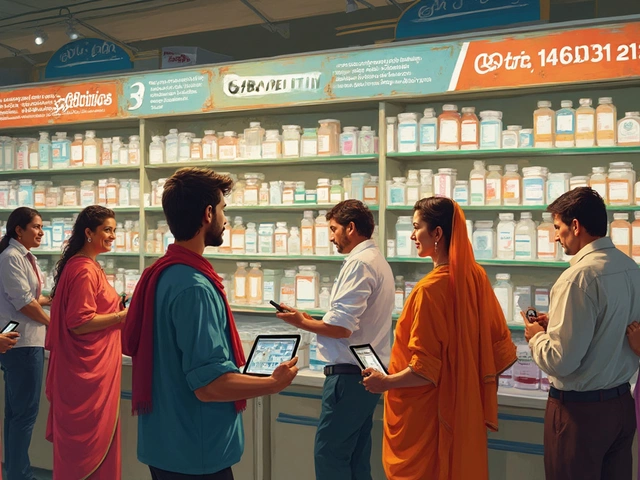Prescription Savings: Real Ways to Lower Your Medicine Costs
Did you know you can cut your prescription bill by up to 70% without compromising care? Most people just pay the sticker price because they don’t know the tricks. Below you’ll find straight‑forward steps you can start using right now.
Swap to Generics Whenever Possible
Generic drugs contain the same active ingredients as brand‑name versions, but they cost a fraction. Ask your doctor or pharmacist if a generic is available for each prescription. In many cases the price difference is 80% or more. If your doctor insists on a brand name, request a justification and ask if a therapeutic equivalent is okay.
Use Coupons, Discount Cards, and Apps
Pharmacy chains like CVS, Walgreens, and online services offer printable coupons and free discount cards. Websites such as GoodRx, PharmacyChecker, and PayYourRx compare prices at nearby stores and give you a coupon code. Simply search the drug name, print the coupon, and show it at checkout. The savings can be $10‑$50 per prescription.
Many insurance plans have a “preferred pharmacy” list. Filling your script at a preferred location often triggers lower co‑pays. Even if you aren’t insured, the same discount cards work for cash purchases.
Some state programs in India provide subsidized medicines for chronic conditions. Check local health department websites or ask your doctor if you qualify for any government‑run schemes.
Another quick win is to ask for a 90‑day supply instead of a 30‑day fill. Pharmacies usually charge less per pill when you buy more at once, and you save on trips to the counter.
If you have a high deductible health plan, consider buying a few months’ worth of a medication early in the year when the deductible is low. This spreads the cost over the year and can keep you under the deductible threshold.
Talk to your pharmacist about therapeutic alternatives. For example, if you need a cholesterol drug, there might be a cheaper statin that works just as well. Pharmacists are trained to spot cost‑effective options and can often switch you without a doctor’s visit.
When you receive a prescription, don’t forget to check the label for possible dosage adjustments. Taking a lower dose (if medically appropriate) can stretch your supply and lower overall spending.
Finally, keep a record of your medication expenses. Knowing how much you spend each month helps you spot patterns, negotiate better deals, and decide when it’s time to switch to a more affordable option.
By combining generic swaps, coupons, discount cards, and smart pharmacy choices, you can bring your prescription costs down dramatically. Start with one tip today, and watch the savings add up.

Can You Really Get Wegovy for $25? What Weight Loss Clinics Aren’t Telling You
Wegovy, a popular prescription for weight loss, is plastered everywhere with the promise of $25 deals—but is it legit? This article breaks down what’s real and what’s hype about those tempting low-price offers. It gets into the fine print about insurance, savings cards, and who actually qualifies. Expect straightforward tips to avoid hidden costs and make the process less confusing. If you’re thinking about starting Wegovy through a weight loss clinic, this guide will help you know what to expect.

Best Medicine for Diabetes: Discover Your Options
Mar, 28 2025

Is Gabapentin a Controlled Substance?
Mar, 4 2025


